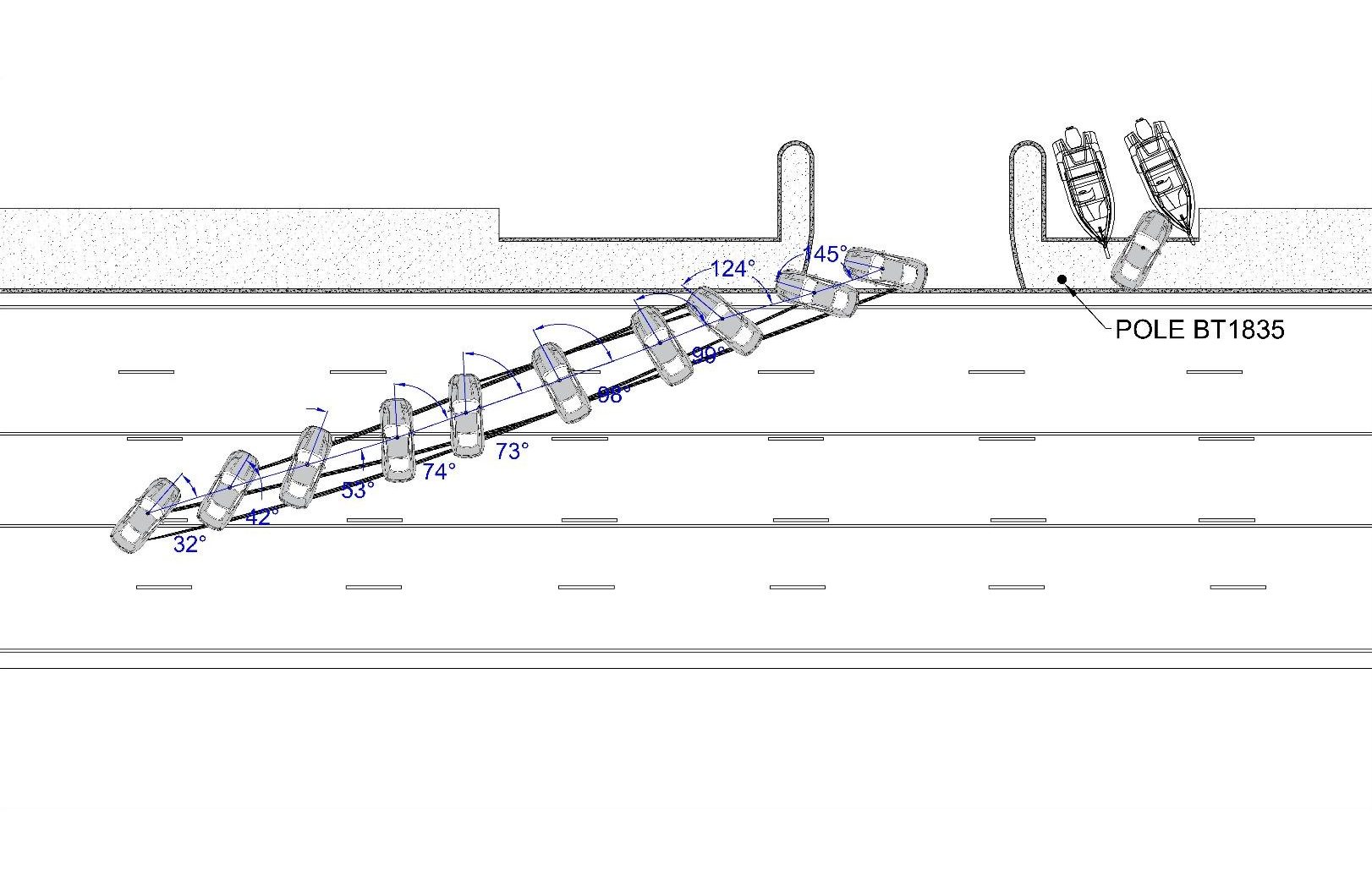Photogrammetry is the science of obtaining information and three-dimensional measurements from two-dimensional photographs. In situations where the vehicles involved in a collision are no longer available for inspection or the physical evidence on the roadway has faded away, photogrammetry can be utilized to determine data needed for a reconstruction analysis. By using one or more photographs, in conjunction with scientific photogrammetric techniques, ARCCA engineers can determine crush measurements, the length of skid marks, and the location of physical evidence on the roadway.

Vehicle Crush
Vehicle crush in photographs can be determined by solving for the unknown camera parameters that captured the image. First, a camera is calibrated to characterize the camera’s focal length, principal point, and lens distortion. The calibrated camera can then be utilized to photograph an exemplar, or undamaged vehicle. Control points that are undamaged can then be selected in photographs of the exemplar and subject vehicle. By “connecting” the photographs together, a photogrammetric solution is obtained which results in a solution to the inverse or unknown camera. Once a solution is obtained, the crush profile on the vehicle can be mapped.



Accident Scene
Similar steps can also be taken when mapping forensic evidence on the roadway. A calibrated camera or three-dimensional laser scan data can be used to solve for the unknown camera properties that captured the scene of the accident. When a solution to the camera is obtained, evidence on the roadway can be plotted and aid in a reconstruction analysis.


